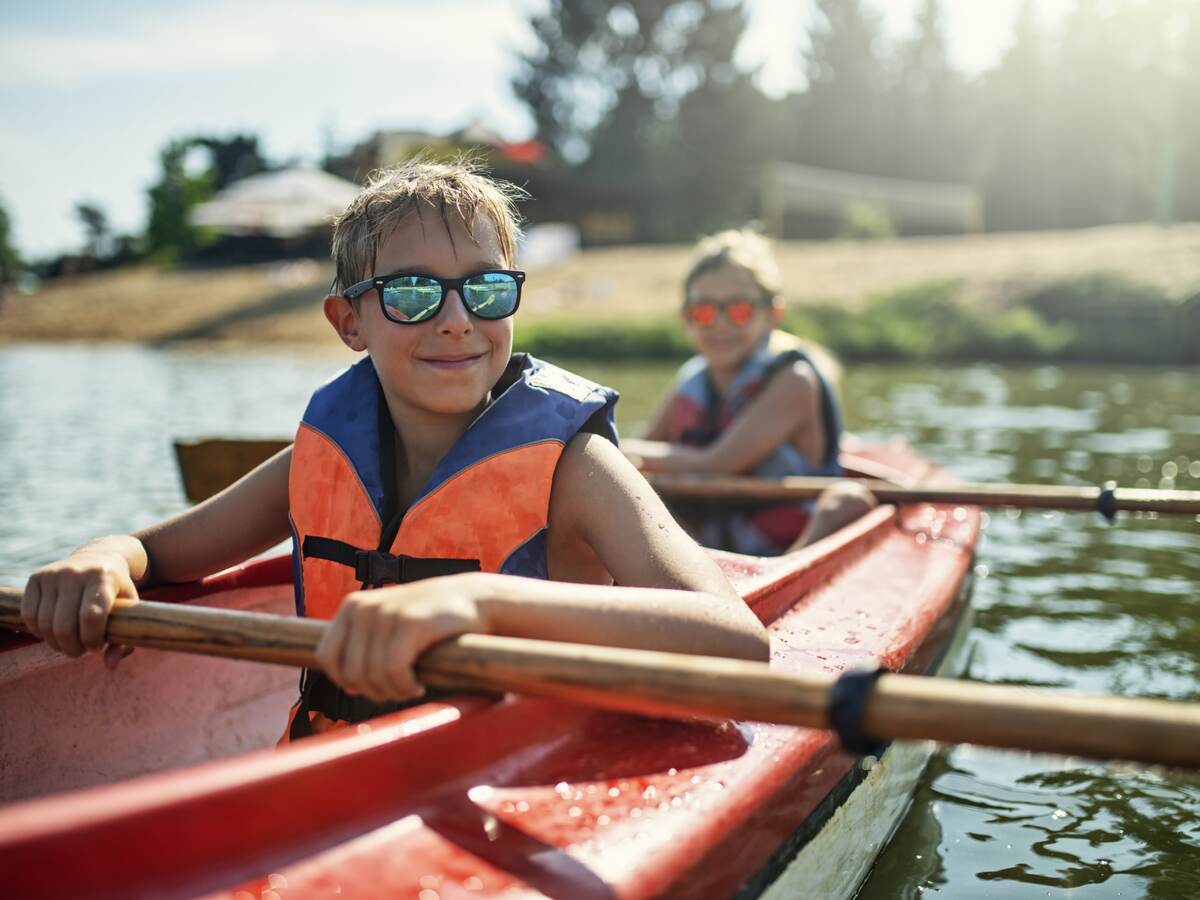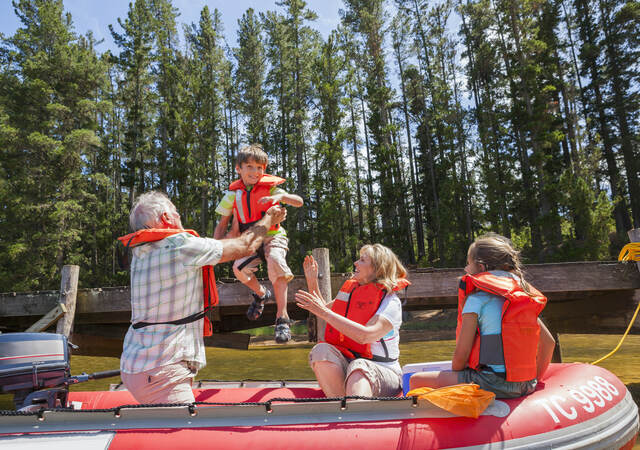To sell personal flotation devices (PFDs) in global markets, your PFDs must be certified to multiple regulatory-driven standards. A PFD expert from UL Solutions answers frequently asked questions about how to gain access to the U.S., Canadian, EU and U.K. markets.
Q: Are there any differences between UL 12402, the Standard for Safety of Personal Flotation Devices, and ISO 12402?
There are some slight differences. For instance, ISO 12402 requires that the rotating shock-bin and temperature cycling test are undertaken as preconditioning prior to the mechanical tests. That is not required in the UL Standard. When we harmonize a test program, we typically conduct it to the worst-case scenario. Unfortunately, that does mean that sometimes there is an element of risk. For instance, a device that passes the mechanical tests without the preconditioning and then doesn’t pass them with the preconditioning may comply with the UL Standard but not the ISO standard, and we wouldn’t necessarily know that if we apply the worst-case scenario. So there is an element of risk, however, because we don’t usually see the preconditioning or the differences between the standards having a considerable impact on the outcome of the testing. We always want to make sure that when we do a harmonized testing program, we let the customer or the manufacturer know what the risk is, what the testing program we are undertaking is, and what the worst-case scenario is. In all our experience, we have not noticed that to have a significant impact on the performance of the device — especially with the introduction of the new requirements for cylinder retention devices on inflatables, where the rotating shock bin test may have disturbed that in the past.
Q: For UL 12402 Part 5, Buoyancy Aids (Level 50) – Safety Requirements, Canada will accept Level 50 newtons. Before, it was 70 newtons. Please explain this change.
UL 12402 Part 5 is called a Level 50 device, which still requires the minimum buoyancy of 70 newtons as it did before. It is called Level 50 because of the current interpretation of the ISO standard, which is 50 newtons. Currently, UL 12402 Part 5 is still a 70-newton device, even though it is Level 50.
Q: Beyond certification, how is maintenance surveillance going to be managed? Is the process harmonized for product complying with U.S., U.K. and EU standards?
For U.K. and Europe certifications, we harmonize the modules, so if we were to conduct a Module D audit, we would conduct those at the same time under one report. U.S. and Canadian certification have a harmonized follow-up program through UL Solutions, but we don’t currently harmonize the U.S. and Canadian requirements with the European and U.K. requirements. That is predominantly because the surveillance inspections are done in slightly different ways. In Europe, it tends to be an annual quality assessment, whereas for the U.S. and Canadian requirements, testing and inspection are often actually per quarter, for instance.
So there are slightly different requirements for both. In the future, as some of the requirements and standards come closer together, we’ll always be looking at ways we can align those. The one thing we try to do is — and this doesn’t always work out due to timing — but we always try to use the same field representative to go into the factory. So, the UL Solutions representative will always be somebody local, close by the factory — someone who speaks the language. Then we would ask them to align it, for example, if there is a three-to-six-month window to do the U.K. and European audit, then instead of on one day going for the U.S. and Canadian inspection, they may then take two days and do the EU/U.K. and USCG/Canadian audits back-to-back, where possible.
Q: Can a U.K.-based laboratory or Notified Body be accepted as an EU Notified Body, or is this simply a function of where the Notified Body is located?
This is subject to interpretation by the different countries and accreditation bodies. To be a U.K. Approved Body, that certification body must have a legal entity within the U.K. For a European Notified Body, again, the certification body must have a legal entity based in a country within the European Union. UL Solutions has two locations in the U.K. in Basingstoke and Warrington and a location in Arnhem, Netherlands.
Q: Regarding combined testing and certification of UL 12402 and ISO 12402 at the Research Triangle Park, North Carolina facility (RTP), does UL Product iQ® include components that are acceptable in both the North American and the U.K./EU markets? In other words, how can I find components that are acceptable in all markets?
Components used in PFDs in Europe and the U.K. are required to comply with EN ISO 12402-7, whereas in the U.S. and Canada (when using UL 12402), they must comply with UL 1191, the Standard for Safety of Components for Personal Flotation Devices. Generally speaking, the test methods and requirements in UL 1191 are exactly the same as EIN/ISO 12402 Part 7. The only exception is knit fabrics. Any knit fabrics have completely different test methods in Europe between the ISO standard and the UL Standard, so they can’t be considered equivalent.
For everything else — all other components — what we have done as a Notified Body in Europe and an Approved Body in the U.K. is accept Recognized Components from UL 1191. The only caveat to that is most of the requirements are the same. However, there are some instances where the North American requirement is one or two pounds or one or two newtons lower than the European/U.K. requirement. So what we tend to have to do is look at the components that are being used and check the data of the Recognized Components to determine that they meet the requirements of ISO 12402-7.
For knit fabrics, we would have to have a test report for ISO 12402-7 and the UL 1191 Recognized Component. That is because the test methods are completely different. We can help customers look at which components should be used, and we can include that in our preliminary investigation. Any knit fabrics would have completely different standards in Europe. So, if a customer has a product for built materials and all of its UL 1191-Recognized Components comply with all requirements, they can submit that bill of materials to UL Solutions. We can do a preliminary investigation and determine if all those components also comply with ISO 12402-7, and then draw up the test plan and do any other evaluations to the ISO standard prior to beginning the testing that may help them comply with the requirements.
Q: Should U.S. manufacturers reach out to UL Solutions engineers to achieve SOLAS approval on life jackets and immersion suits?
Yes, any of the staff in the UL Solutions PFD team will be able to help with all of the different markets. We all work together to deliver all the different certifications. That is one of the benefits: You should have one project handler who is based locally to you to conduct the project handling and certification for all the different certifications around the world, including SOLAS.
Q: For the U.S. standards that are currently under development, do you have a time frame as to when they will be completed and ready for certification applications?
It is difficult to give a concrete timeline at the moment, but for both Part 3 and Part 6, we would at least be looking at mid to late 2023.
Get connected with our sales team
Thanks for your interest in our products and services. Let's collect some information so we can connect you with the right person.


